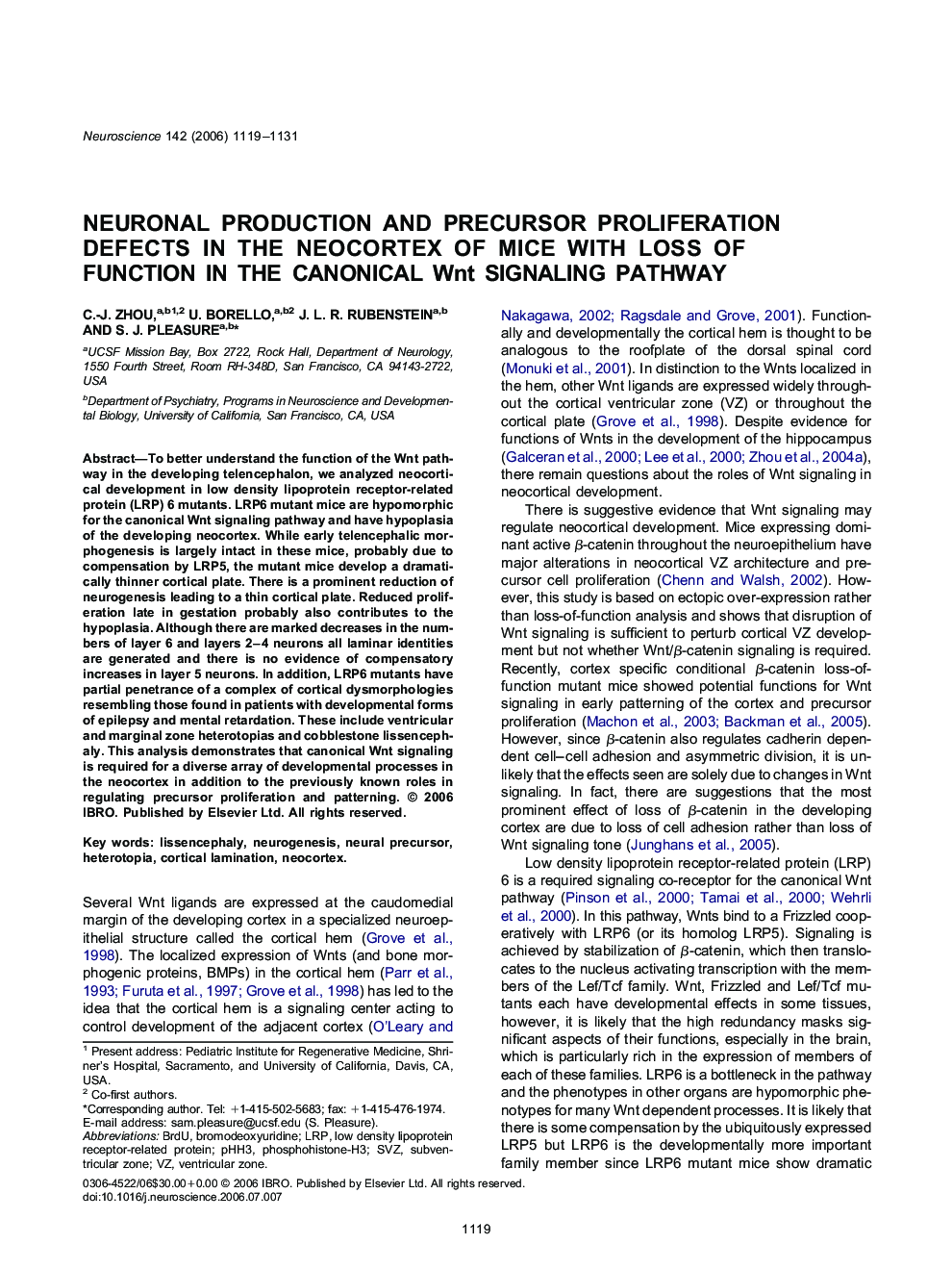| کد مقاله | کد نشریه | سال انتشار | مقاله انگلیسی | نسخه تمام متن |
|---|---|---|---|---|
| 4341570 | 1295840 | 2006 | 13 صفحه PDF | دانلود رایگان |

To better understand the function of the Wnt pathway in the developing telencephalon, we analyzed neocortical development in low density lipoprotein receptor-related protein (LRP) 6 mutants. LRP6 mutant mice are hypomorphic for the canonical Wnt signaling pathway and have hypoplasia of the developing neocortex. While early telencephalic morphogenesis is largely intact in these mice, probably due to compensation by LRP5, the mutant mice develop a dramatically thinner cortical plate. There is a prominent reduction of neurogenesis leading to a thin cortical plate. Reduced proliferation late in gestation probably also contributes to the hypoplasia. Although there are marked decreases in the numbers of layer 6 and layers 2–4 neurons all laminar identities are generated and there is no evidence of compensatory increases in layer 5 neurons. In addition, LRP6 mutants have partial penetrance of a complex of cortical dysmorphologies resembling those found in patients with developmental forms of epilepsy and mental retardation. These include ventricular and marginal zone heterotopias and cobblestone lissencephaly. This analysis demonstrates that canonical Wnt signaling is required for a diverse array of developmental processes in the neocortex in addition to the previously known roles in regulating precursor proliferation and patterning.
Journal: Neuroscience - Volume 142, Issue 4, 3 November 2006, Pages 1119–1131